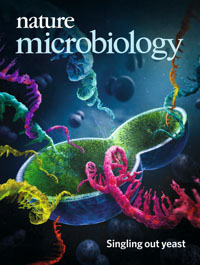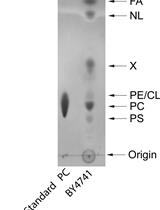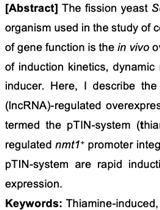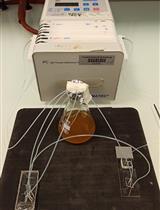- EN - English
- CN - 中文
Yeast Single-cell RNA-seq, Cell by Cell and Step by Step
单细胞酵母逐个单步RNA-seq操作方法
(*contributed equally to this work) 发布: 2019年09月05日第9卷第17期 DOI: 10.21769/BioProtoc.3359 浏览次数: 7611
评审: Alba BlesaHélène M. LégerShyam Solanki
Abstract
Single-cell RNA-seq (scRNA-seq) has become an established method for uncovering the intrinsic complexity within populations. Even within seemingly homogenous populations of isogenic yeast cells, there is a high degree of heterogeneity that originates from a compact and pervasively transcribed genome. Research with microorganisms such as yeast represents a major challenge for single-cell transcriptomics, due to their small size, rigid cell wall, and low RNA content per cell. Because of these technical challenges, yeast-specific scRNA-seq methodologies have recently started to appear, each one of them relying on different cell-isolation and library-preparation methods. Consequently, each approach harbors unique strengths and weaknesses that need to be considered. We have recently developed a yeast single-cell RNA-seq protocol (yscRNA-seq), which is inexpensive, high-throughput and easy-to-implement, tailored to the unique needs of yeast. yscRNA-seq provides a unique platform that combines single-cell phenotyping via index sorting with the incorporation of unique molecule identifiers on transcripts that allows to digitally count the number of molecules in a strand- and isoform-specific manner. Here, we provide a detailed, step-by-step description of the experimental and computational steps of yscRNA-seq protocol. This protocol will ease the implementation of yscRNA-seq in other laboratories and provide guidelines for the development of novel technologies.
Keywords: Yeast (酵母)Background
The appearance of single-cell-omics has revolutionized our understanding of many biological processes and is a field that is rapidly evolving at both the experimental and computational level. Over the last decade, there has been a rapid increase in the number of features that can be measured within individual cells. Single-cell RNA-seq (scRNA-seq) has pioneered this endeavor, and it has become a routine experiment to perform in higher eukaryotes. While very close to the entirety of the repertoire of bulk experiments in higher eukaryotes now have single-cell counterparts, single-cell tools for microorganisms (beyond fluorescent reporter-based methods) are scarce. This technological gap is mainly due to technical limitations imposed by the intrinsic nature of yeast and other microorganisms.
Unlike the mammalian cells, in which scRNA-seq was developed, yeast cells are smaller in cell, genome and transcriptome size. The presence of a rigid cell wall, which needs to be removed prior to library preparation, has been one of the major technical challenges for single cell analysis. On top of that, the yeast genome is highly condensed and pervasively transcribed. Over 85% of their genome is expressed from both strands with extensive transcript isoform diversity per gene (David et al., 2006; Pelechano et al., 2013, 2014 and 2015), and this requires a sensitive, quantitative and strand-specific approach.
As was the case for higher eukaryotes, initial studies exploring scRNA-seq in yeast focused on the development and optimization of the method. Recently, three yeast single-cell RNA-seq approaches have been reported (Gasch et al., 2017; Nadal-Ribelles et al., 2019; Saint et al., 2019). Interestingly, each one of them uses a different cell-isolation strategy and library-preparation protocol. Cell isolation is one of the main differences across these studies that range from microfluidics (Gasch et al., 2017), micromanipulation (Saint et al., 2019) and index sorting (Nadal-Ribelles et al., 2019), the later described here. Microfluidic and micromanipulation-based approaches require specialized equipment and are labor intensive, but allow imaging of individual cells by microscopy as a way to measure phenotype. The protocol described here for yeast single-cell RNA-seq (yscRNA-seq), relies on index sorting as a strategy for recording phenotypic information such as cell morphology and any Fluorescent-Activated Cell-Sorting-compatible feature (fluorescent proteins, antibodies, etc.). Index sorting provides a seamless strategy for merging techniques for individual phenotyping and transcriptional profiling in cells.
A major tipping point for single-cell isolation was the appearance of droplet-based methodologies (Zhang et al., 2019). These technologies dramatically increase potential throughput by generating and isolating cDNA in barcoded gel emulsions, which encapsulate single cells on the order of thousands of cells per run, and thus the cost significantly decreases. Interestingly, a preliminary droplet-based study in yeast is underway (Gresham et al., 2019). While cell capturing boosts cell numbers to an unprecedented scale, the number of genes detected per cell tends to be much lower (Skinnider et al., 2019) and phenotypic information of individual cells is lost. In addition, customization of library preparation is complex and labor intensive in droplet based-approaches, which will most likely be bypassed as technologies are developed.
While cell-isolation strategies determine the number of cells and phenotypic information that can be recorded, the choice of library-preparation approach defines the kind of transcriptional profiling. Due to the intertwined nature of the yeast transcriptome, and the diversity of isoforms per gene, library preparation requires both gene- and strand-isoform-specific resolutions. YscRNA-seq is based on STRT-seq (Islam et al., 2014), and its library design bypasses the technical limitations of working with yeast, fulfilling the requirements for a high-resolution transcriptome profiling method. First, unique molecular identifiers (UMI) are incorporated during cDNA synthesis via a biotinylated template-switching oligo (TSO) at the 5′-end of the molecule to digitally count the absolute abundance of a gene, along with its transcription start site (TSS) position. Second, the use of a homemade Tn5 enzyme to incorporate cell-specific adaptors provides a cost-effective strategy that greatly reduces experimental costs, compared to commercial Tn5 (Hennig et al., 2018). Finally, biotinylated primers allow selectively recovering 5′ ends. Moreover, the high affinity between streptavidin and biotin leads to a sequestration of the biotinylated strand after a brief denaturing step, which releases the non-biotinylated strand into the supernatant for sequencing. These features make yscRNA-seq one of the most sensitive methods available, and the most sensitive method for yeast reported to date (Nadal-Ribelles et al., 2019).
We anticipate that the development of novel methodologies with different aims will soon start to emerge, and yscRNA-seq will be extended to any yeast species or microorganism. The protocol described here, along with future optimizations, could serve as a starting point for the development of new methods. There are many unanswered biological questions that influence our understanding of human health, such as the emergence of drug-resistant microbial phenotypes. Generation of solid frameworks to profile microorganisms at single-cell resolution promises to expand our understanding, and perhaps answer some of these questions once and for all.
Materials and Reagents
Note: Reagents can be from different suppliers as far as they are only used for single-cell RNA-seq protocols and nuclease free. The ones listed here were used to develop the protocol. The regular molecular biology reagents are assumed to be already present in each laboratory (e.g., water, Tris, or NaCl). For plastic labware (filter tips and tubes), we have used several brands, with identical results as far as the material is certified to be nuclease-free and low binding.
- Eppendorf LoBind 1.5 ml (Eppendorf, catalog number: 30108051)
- Break-away plates (Thomas Scientific, catalog number: EK-75118)
- 96-well plates (Thomas Scientific, catalog number: EK-75012)
- Filter Tips (Mettler Toledo, catalog numbers: 17007954, 17014973, 17014973)
- qPCR plates (Applied Biosystems, catalog number: 4309849)
- Universal PCR plate seal (Sigma-Aldrich, catalog number: Z742420-100EA)
- UMI_Oligo dT_T31 (100 μM) (Integrated DNA Technologies)
- UMI_TSO6 (Integrated DNA Technologies)
- STRT-adaptors 96 different oligos (96 well plate Integrated DNA Technologies)
- UMI PCR (96 well plate Integrated DNA Technologies
- dNTP 25 mM (Thermo Fisher, catalog number: R0181)
- 50x Advantage 2 Polymerase (Takara, catalog number: 639202)
- PvuI (Cutsmart 10x provided) (New England Biolabs, catalog number: R3150L)
- DynabeadsTM MyOneTM Streptavidin C1 (Thermo Fisher, catalog number: 65001)
- Zymolyase 100T (100 mg/ml) (US Bio, catalog number:37340-57-1)
- RNase Zap (Thermo Fisher, catalog number: AM9780)
- RNase Inhibitor (40 U/ml) (Takara, catalog number: 2313A)
- RNase-nuclease free water (Thermo Fisher, catalog number: 10977035)
- ERCC RNA spike ins (Thermo Fisher, catalog number: 4456740)
- TAPS (Sigma-Aldrich, catalog number: T5316)
- DMF (Sigma-Aldrich, catalog number: 74438)
- 5x Superscript First strand buffer (Thermo Fisher, catalog number: 18064014)
- MgCl2 (1 M) (Thermo Fisher, catalog number: AM9530G)
- Betaine (5 M) (Sigma-Aldrich, catalog number: 61962)
- Superscript II (Thermo Fisher, catalog number: 18064014)
- 10x Advantage 2 PCR Buffer (Takara, catalog number: 639202)
- Tris (Sigma-Aldrich, catalog number: T2319)
- Tween-20 (Sigma-Aldrich, P9416-50ML)
- Glycerol (Sigma-Aldrich, catalog number: G5516)
- KAPA library quantification (Kapa Biosystems, catalog number: KR0405)
- Ampure beads (Beckman Coulter, catalog number: A63881)
- TE 10x (Sigma-Aldrich, catalog number: T9285)
- NaCl (Sigma-Aldrich, catalog number: S5150)
- EDTA (Thermo Fisher, catalog number: AM9261)
- Elution Buffer (EB) (Qiagen, catalog number: 19086)
- PB Buffer (PB) (Qiagen, catalog number: 19066)
- Sybergreen 2x mastermix (Invitrogen, catalog number: 4309155)
- LNA primers (Exiqon)
- Primers for qPCR
- SOMN17 Fw_TDH3_probe: TCGTCAAGTTGGTCTCCTGG
- SOMN18 Rv_TDH3_probe: GGCAACGTGTTCAACCAAGT
- SOMN21 Fw_ADH1_probe: TGGTGCCAAGTGTTGTTCTG
- SOMN22 Rv_ADH1_probe: GGCGAAGAAGTCCAAAGCTT
- SOMN310 Fw_5_ERCC_00130: CGGAAAAGTACTGACCAGCG
- SOMN311 Rv_5_ERCC_00130: TGCCAATGACTTCAGCTGAC样式
- Optical lids for qPCR (Applied Biosystems, catalog number: 4311971)
- DNA High Sensitivity CHIP (Agilent, catalog number: 5067-4626)
- 1% Triton X-100 (Sigma-Aldrich, catalog number: X100-1L)
- 100 mM DTT (Thermo Fisher, catalog number: 18064014)
- Propidium Iodide (PI) (Sigma Aldrich, P4170-10MG)
- Cell capturing and lysis solution (see Recipes)
- 2x BWT Buffer (see Recipes)
- TNT Buffer (see Recipes)
Equipment
- 96-well plate magnet (Thermo Fisher, catalog number: 12331D)
- 1.5-2 ml tube magnet (Thermo Fisher, catalog number: 12303D)
- Bioanalyzer (Agilent)
- HiSeq 2000 (Illumina)
- FACS (BD Influx, or Aria II, nozzle 70 and 100 microns)
- qPCR (Applied Biosystems)
- Qubit (Thermo Fisher, catalog number: Q32854)
- Thermocycler (any vendor)
- Thermomixer (any vendor)
- Multichannel pipettes (any vendor)
- Plate centrifuge (any vendor)
Software
- Novocraft (Novocraft Technologies Sdn Bhd, http://www.novocraft.com/)
- Samtools v1.3.1 (Li et al., 2009, http://samtools.sourceforge.net/)
- R programming language v.3.5.0 (R Core Team, 2019, https://www.r-project.org/)
- Genomic Alignments R package v.1.18.1 (Lawrence et al., 2013)
Procedure
文章信息
版权信息
© 2019 The Authors; exclusive licensee Bio-protocol LLC.
如何引用
Nadal-Ribelles, M., Islam, S., Wei, W., Latorre, P., Nguyen, M., de Nadal, E., Posas, F. and Steinmetz, L. M. (2019). Yeast Single-cell RNA-seq, Cell by Cell and Step by Step. Bio-protocol 9(17): e3359. DOI: 10.21769/BioProtoc.3359.
分类
微生物学 > 微生物遗传学 > 基因表达
微生物学 > 微生物细胞生物学 > 细胞分离和培养
分子生物学 > RNA > 转录
您对这篇实验方法有问题吗?
在此处发布您的问题,我们将邀请本文作者来回答。同时,我们会将您的问题发布到Bio-protocol Exchange,以便寻求社区成员的帮助。
Share
Bluesky
X
Copy link













